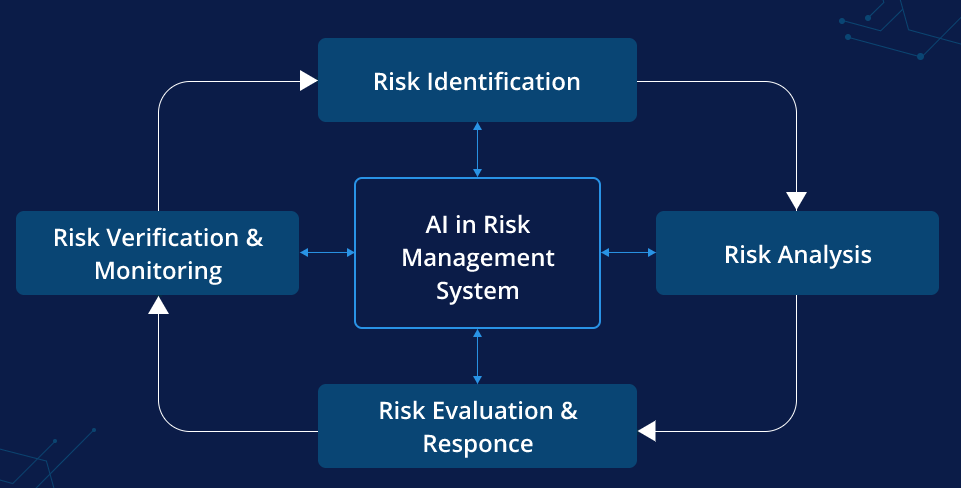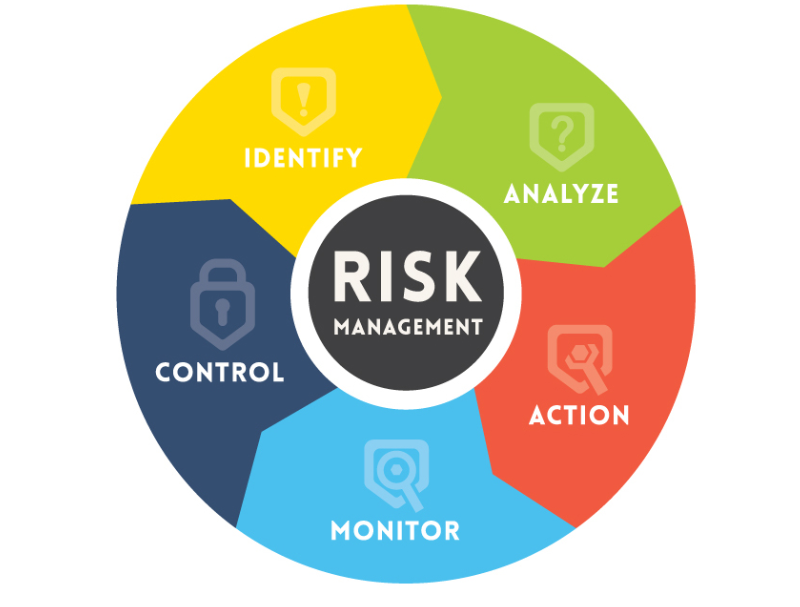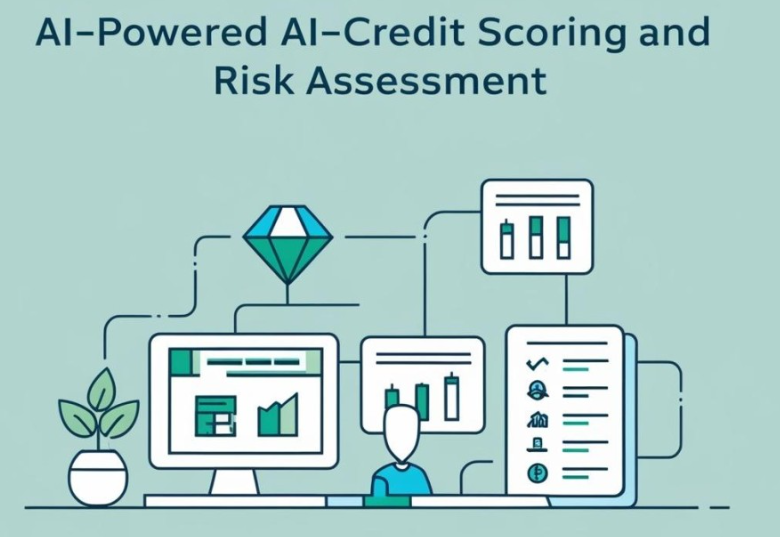AI-Powered Risk Assessment: A New Era in Wealth Preservation and Growth
 Srinivasa Rao Challa
Srinivasa Rao Challa
In the fast-paced, ever-evolving world of finance, managing wealth effectively requires a deep understanding of risk. Traditionally, risk management and wealth preservation relied on human expertise, market insights, and historical data analysis. However, with the rise of Artificial Intelligence (AI), wealth managers and investors now have access to more advanced tools that can transform how they assess and manage risk. AI-powered risk assessment is ushering in a new era of wealth preservation and growth by offering enhanced decision-making capabilities, improved forecasting, and personalized strategies.
The Evolution of Risk Assessment
Risk assessment, at its core, involves identifying potential threats to investments and quantifying the likelihood of adverse outcomes. This process traditionally required human expertise, where financial analysts used a combination of historical data, economic trends, and statistical models to predict the risks associated with investment portfolios. While effective to an extent, these methods were often limited by human biases, inefficiencies, and the inability to process large amounts of real-time data.
The introduction of AI to risk assessment has significantly changed the landscape. AI’s ability to process vast datasets, identify patterns, and continuously learn from new information enables more accurate and dynamic risk evaluations. This shift is transforming both wealth preservation and growth strategies by making them more responsive to market changes, more personalized, and more predictive of potential risks.

Key Features of AI in Risk Assessment
Eq.1. Value at Risk (VaR)

Data Processing and Analysis One of the main advantages of AI is its ability to process and analyze vast amounts of data at speeds beyond human capacity. AI systems can sift through structured and unstructured data from various sources such as financial reports, market data, news articles, and social media feeds. This allows AI to provide a more comprehensive picture of the risks associated with specific assets or markets.
By utilizing machine learning (ML) algorithms, AI can analyze historical trends, detect emerging risks, and identify correlations that might not be immediately apparent to human analysts. This enhanced data processing ensures that AI-driven risk assessments are grounded in real-time insights rather than relying solely on outdated data.
Predictive Analytics Predictive analytics, powered by AI, has revolutionized how investors assess future risk. Traditional models, such as Value at Risk (VaR), often depend on historical data to estimate potential future losses. While this approach has its merits, it assumes that future events will behave similarly to past events, which may not always hold true.
AI, particularly deep learning and reinforcement learning models, can detect more complex patterns and generate predictions based on dynamic, ever-evolving market conditions. AI systems continuously refine their predictive capabilities by learning from new data, improving their accuracy over time. This allows investors to assess potential risks with greater precision, even in volatile or uncertain market conditions.
Real-Time Monitoring and Alerts AI-powered systems enable real-time risk monitoring, which allows wealth managers and investors to stay ahead of potential threats. These systems track market movements, geopolitical events, and even social media sentiment in real time. When significant shifts or trends are detected, AI can generate alerts and recommendations for action, giving investors the ability to make timely, informed decisions to mitigate risks or seize opportunities.
For example, if a particular asset shows signs of increasing volatility or a sudden geopolitical crisis threatens to affect a portfolio’s performance, AI can quickly notify the investor, allowing for rapid response before the situation escalates.
Personalized Risk Profiles AI-driven risk assessment tools can offer highly personalized insights for individual investors. By considering factors such as risk tolerance, financial goals, investment horizon, and even behavioral traits, AI can create customized risk profiles and tailor investment strategies accordingly. This level of personalization is not easily achievable through traditional methods, which often use broad categorization techniques to assess risk.
Furthermore, AI systems can adjust these profiles in real time based on changes in an investor’s circumstances or shifts in market conditions, ensuring that the risk assessment remains aligned with the investor's evolving needs and goals.

The Impact on Wealth Preservation and Growth
AI-powered risk assessment is having profound implications for wealth preservation and growth in several ways:
Eq.2. Machine Learning Risk Prediction (Linear Regression Example)

More Informed Investment Decisions By integrating AI into their decision-making processes, wealth managers and investors can make more informed choices. With real-time data analysis and predictive capabilities, AI helps investors identify profitable opportunities while simultaneously protecting them from potential losses. This dual focus on growth and preservation ensures that wealth managers can build more resilient portfolios that weather market fluctuations.
Enhanced Portfolio Diversification AI can identify the optimal portfolio mix by analyzing a wide range of factors that influence asset performance. Using AI, wealth managers can better understand correlations between assets, industry sectors, and global markets, leading to more effective diversification strategies. This, in turn, minimizes risks and increases the likelihood of positive returns, even during market downturns.
Behavioral Risk Mitigation One of the most significant contributions AI can make to wealth preservation is its ability to help mitigate behavioral risks. Human investors often fall prey to emotional biases, such as panic selling during market downturns or overconfidence during market booms. AI systems, by contrast, can provide data-driven insights, ensuring that investment decisions are based on facts and analysis rather than emotions.
Automated Risk Adjustments AI can automate the process of adjusting portfolios based on changing market conditions. For example, if an asset class begins to underperform or becomes too volatile, AI systems can recommend rebalancing the portfolio to maintain an optimal risk-to-reward ratio. This proactive approach helps protect wealth from sudden market shocks and enhances long-term growth potential.
Challenges and Ethical Considerations
Despite its numerous advantages, AI-powered risk assessment does come with challenges. One major issue is the reliance on data quality. If the data used to train AI models is flawed or biased, the resulting risk assessments could lead to inaccurate predictions. Additionally, AI systems, while powerful, are not immune to unexpected market events or black swan events, which may be difficult for even the most advanced algorithms to predict.
Ethical concerns around AI’s role in wealth management also persist. The use of AI in investment strategies raises questions about fairness, transparency, and accountability. Ensuring that AI systems are unbiased and do not inadvertently favor certain groups or investment strategies is critical to maintaining trust in these technologies.

Conclusion
AI-powered risk assessment is undeniably transforming the landscape of wealth management, offering a new era of more precise, real-time, and personalized strategies for both wealth preservation and growth. As AI continues to evolve, it holds the potential to not only enhance financial decision-making but also democratize access to advanced risk management tools. By reducing human biases, improving forecasting, and allowing for more informed decision-making, AI is helping investors navigate the complexities of modern financial markets with greater confidence and success. However, its continued integration will require addressing challenges related to data quality, ethics, and transparency to fully realize its potential.
Subscribe to my newsletter
Read articles from Srinivasa Rao Challa directly inside your inbox. Subscribe to the newsletter, and don't miss out.
Written by
